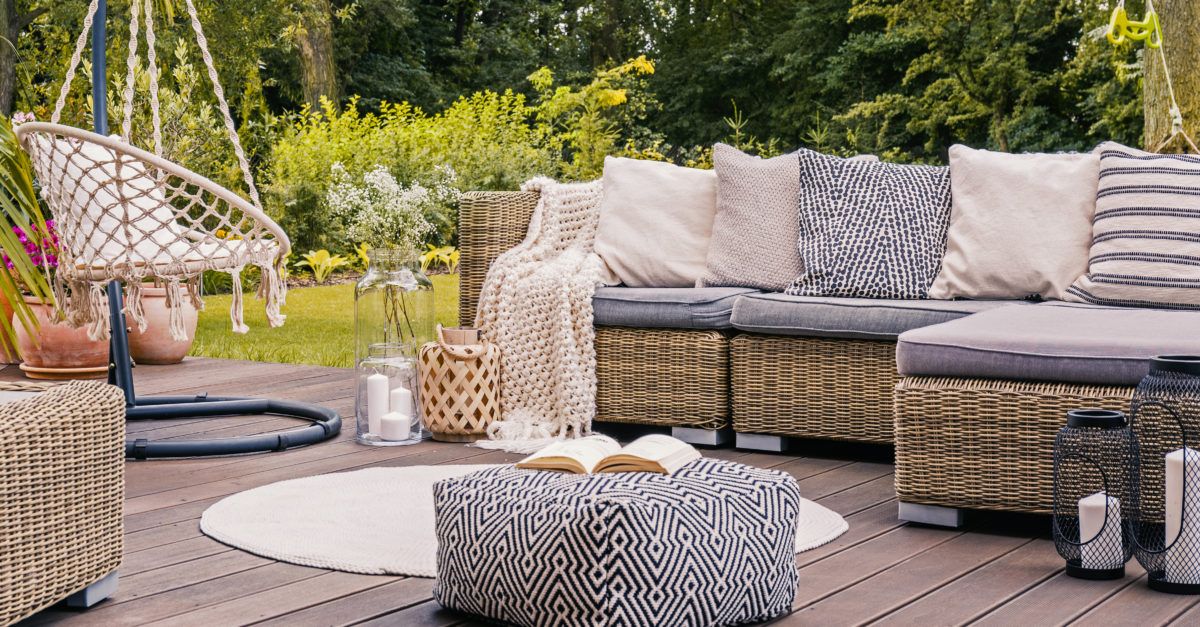When COVID-related closures began in March 2020, many folks hit the big-box stores to prepare for a couple of weeks of inconvenience. Instead, they found themselves working from home permanently while supervising virtual classes and trying to safely take a stroll around the neighborhood on a daily basis. The days that followed brought swamped medical resources, a stratospheric real estate market, and a host of generation-defining paradigm shifts, which have created permanent changes in the way we think about our health and our homes.
Now as we prepare for life post-COVID, many homeowners are thinking about ways to make their homes better suited to their new realities. Here are a few of the ways that everyone, from experts to individuals, are rethinking interior and exterior spaces, home design, and daily living for the post-pandemic world.
Goodbye Open Concept, Hello Flex Spaces
For many years, the chopped-up, old-fashioned interior home layout has been out of favor and the open-concept, free-flowing floorplan has been preferred by buyers in virtually every category and market. Now, however, the new realities of post-COVID living—including working from home for multiple family members, virtual classrooms, and the need for privacy when spending every minute of every day under the same roof—means that more homeowners will be looking to convert their wide-open spaces into discrete, purpose-driven environments.
For some, this may be as simple as putting up a wall to enclose a little-used formal dining room. For others, it may mean adding walls and sectioning off existing open living spaces into a series of smaller rooms for a variety of uses. If you want to keep the option to have it both ways, consider adding French doors, pocket doors, or sliding barn doors to extra-wide doorways so that you can open up the space as needed.
Create Separation Between Out There and In Here
Before COVID, many of us thought little about the transition between the great outdoors and our interior spaces. However, months of wiping down groceries and careful handwashing have made us more mindful of the people, objects, and germs we bring into our interior environments.
One popular addition to post-COVID home styles is the transitional space, either in an existing foyer or as an add-on to a side or rear entrance. These spaces are good for added shoe storage, coat hangers, after-school cubbies, and other fixtures to keep more of the outdoors away from the interior of the home. In addition, a hand-washing station or small powder room makes an ideal place to wash up before encountering other family members and living spaces.
For families who depend on delivery services more than ever before, small covered, enclosed porches will be increasingly popular. These provide a sheltered spot for grocery or package delivery without compromising home security.
Air Purifying and Cleaner Living
Like commercial buildings and transportation providers, we’ve all started thinking more about the quality of indoor air. There are a variety of ways to ensure that your home’s air quality is as good as it can be:
- When possible, take the opportunity to replace the air in your home with fresh, outdoor air. Turn off the AC or heat, open windows, and use ceiling and tabletop fans to circulate stale air and replace it with new air.
- Replace HVAC air filters frequently with the highest possible quality filters to minimize pollutants.
- Invest in greener products for home building, design, decor, and maintenance. Aim for fewer toxic chemicals in cleaning products, low-VOC emitting paints and fabrics, and fewer toxic pesticides.
- Consider replacing older HVAC units, if needed, or ensuring that maintenance is kept up-to-date on a consistent basis so that they are operating at peak efficiency.
Outdoor Spaces Take Center Stage
Much of the exodus from cities to the wide-open spaces of suburban and rural markets was driven, in part, by a desire for more outdoor space. After all, with the closure of entertainment and fitness venues, the ability to spread out and enjoy a more active lifestyle was partially dependent on the size of a lot or backyard.
Now, many homeowners may prefer a backyard cookout instead of having a bunch of guests all seated around the same table or milling about in one room of the home. In addition, with families spending all day every day in closer proximity due to the long-term adoption of work-from-home and distance learning, there is even more need for outdoor spaces to stretch out, workout, get away, and enjoy active play.
Exterior Features and Accessory Buildings
As more families seek to convert their existing properties into suitable environments for living, working, and playing, Accessory Dwelling Units (ADUs), guest houses, and other exterior buildings become sought-after options for creating space, privacy, and a delineation between work and home. These provide space for separate home offices, rental properties, or separate living quarters for adult children or elderly family members.
In addition, storage buildings, pool houses, and other recreational facilities are becoming more important as homeowners seek to optimize their outdoor living options. Increasing demand for pools, sports courts, and workout facilities promises a similar demand for equipment and storage space to support a more active lifestyle at home.
Preparing for What’s Next
The new normal may see many of us permanently doing more from home and rethinking the way we live for the long term. It only makes sense, then, to ensure that our homes are prepared to support more conscientious living both now and in the future.
